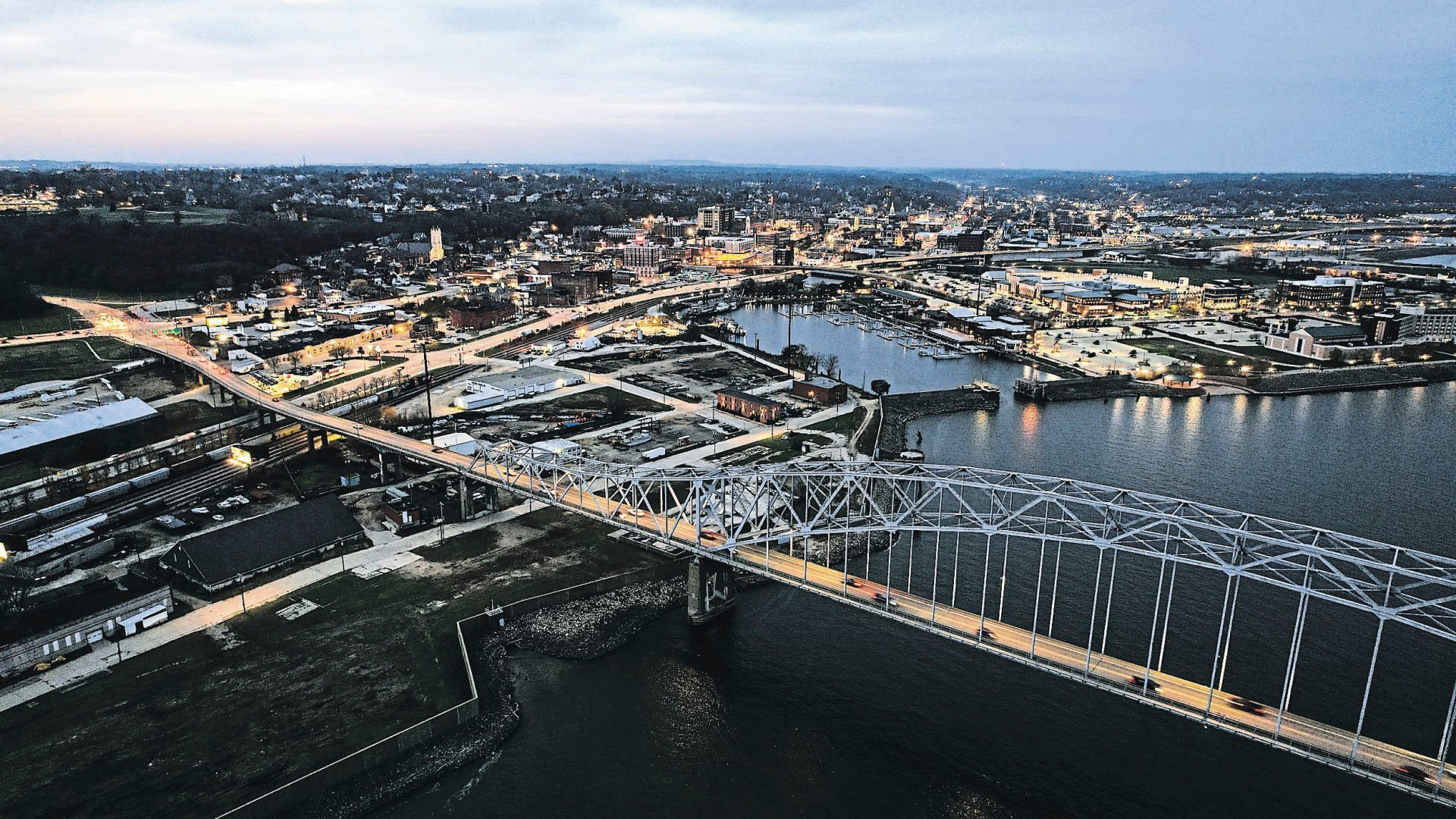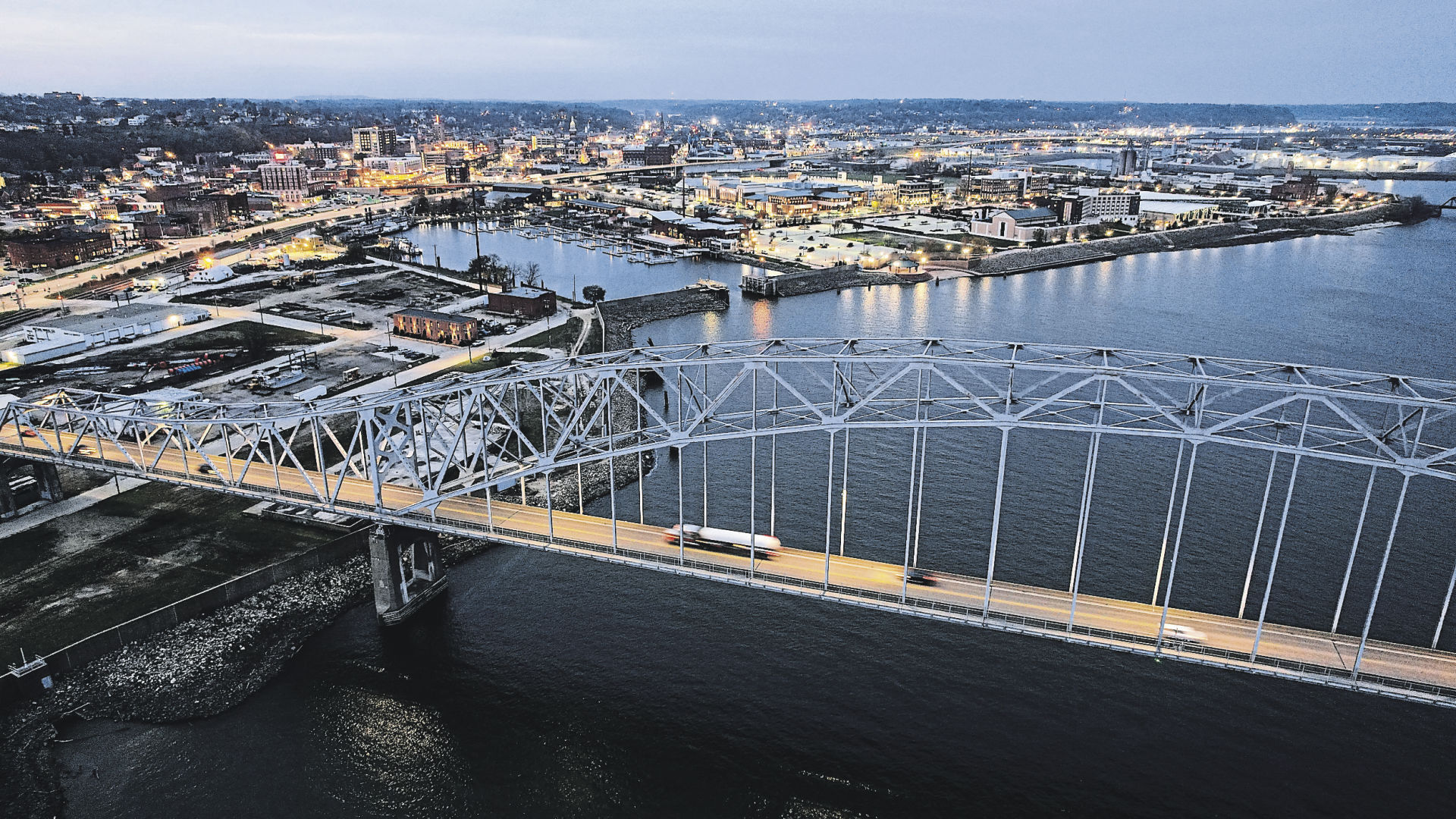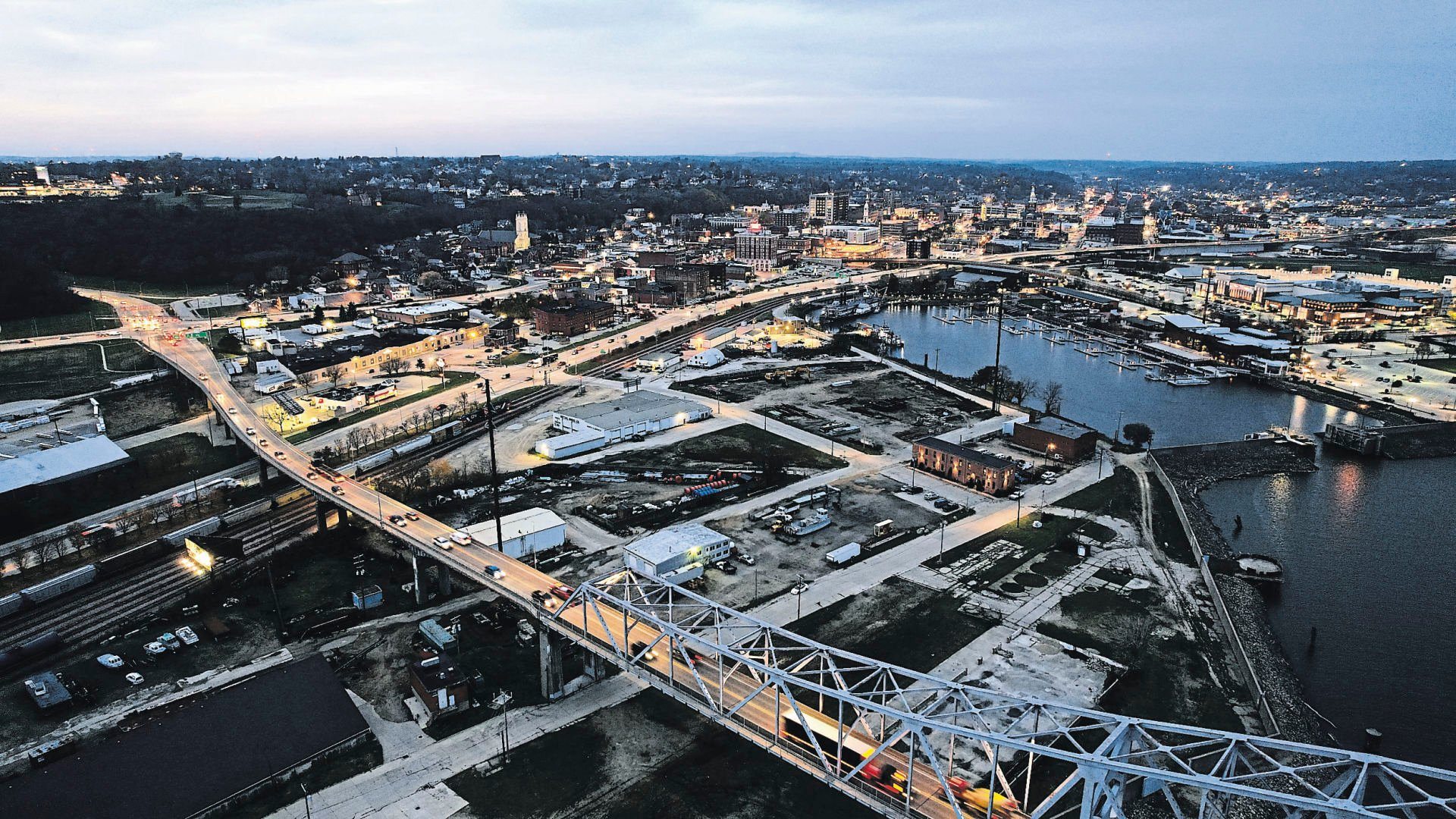December Experts
Agriculture
Lee Schulz, Economist, Iowa State University
Denise Schwab, ISU Extension beef specialist, Iowa State University
Larry Tranel, Dairy Specialist, Iowa State University Extension and Outreach
Agribusiness Banking
Andrew Faubel, VP, Agribusiness Banker, DB&T
Arts and Entertainment
Mark Wahlert, Executive Director, Dubuque Symphony Orchestra
Construction
Matt Mulligan, President and Chief Operating Officer, Conlon Construction
Education
Expert: Paul Erickson, Chief Communications Officer, University of Wisconsin-Platteville
January Experts
Manufacturing
Mike O’ Donnell, Associate Director, Iowa State University, Center for Industrial Research and Service (CIRAS)
Realty
Jared Levy, Realtor, EXIT Realty Dubuque
Retail
Joe Bell, Director of Corporate Communications, Cafaro Company, parent company of Kennedy Mall
Small Business
Jayne Armstrong, District Director, Iowa District Office, U.S. Small Business Administration
Tourism
Karla Thompson, Executive Director, Dyersville Area Chamber of Commerce
We all breathed a sigh of relief when 2020 turned to 2021 as the hope was that the COVID-19 pandemic would be over and the world would return to normal.
While strides have been made to lower COVID infection rates with the vaccines and boosters, the pandemic was a factor in 2021 that affected many business sectors.
Now, on the doorstep to 2022, what are area business sector experts predicting for the upcoming year? Most foresee supply chain issues, workforce shortages and rebuilding after the pandemic to continue into 2022.
In this issue, we hear from experts in five business sectors: Agriculture, agribusiness banking, arts and entertainment, construction and education. In January, manufacturing, real estate, retail, small business and tourism experts will provide their predictions for 2022.
Agriculture Pork
Expert: Lee Schulz, economist, Iowa State University
The pork industry is evolving out of the rubble of the coronavirus pandemic, but more optimism abounds in the U.S. pork outlook than the industry experienced a year ago.
Swine inventory expansion or contraction seems equally likely given current and potential market signals. Costs were a headwind to producer returns in 2021. According to the Iowa State University model for farrow-to-finish production, costs were estimated to have increased 26% or $17 per carcass hundredweight in 2021 compared with 2020. This translates into an increase of $35 per head in 2021 compared to 2020. Feed costs were a big part of this, but pork producers use numerous inputs and services and most all were up notably in 2021.
Many non-feed variable costs could be up again in 2022. Propane prices are expected to jump this winter. Higher hog prices have helped offset the rise in costs. On an annual basis, hog prices were 50% higher in 2021 than in 2020. Moderation in costs and revenues seems imminent for 2022. Costs are forecasted to decrease 5% from 2021 levels. Hog prices are forecasted to decrease 13% from 2021 levels.
The challenging labor situation certainly needs to be mentioned. One thing clearly revealed by the COVID-19 pandemic is heightened vulnerability where labor is most involved.
Beef
Expert: Denise Schwab, ISU Extension beef specialist, Iowa State University
With the liquidation of cows in the western and mountain states due to drought, I anticipate strong cattle markets in the next couple of years. However margins will be tight due to high feed and increasing input costs.
Supply chain issues will continue to cause problems as many of our feed micro-ingredients are imported as well as much of our farming supplies.
The biggest impact of the pandemic is on meat processing workers, and transportation, which I’m afraid, might continue in 2022. Keeping meat processing at full capacity will be important for at least the next year. Everything from processing through retail is critical to keep beef moving to the consumer.
Dairy
Expert: Larry Tranel, dairy specialist, Iowa State University Extension and Outreach
Dairy has seen six years of poor returns and all systems, convention, grazing, organic and grass milk have struggled especially in past two years.
Input costs due to high inflation are outpacing most of milk price increases, though the price continues to be highly variable. New entrants into the industry continue to be low as there is not always a buyer willing to take the milk, especially from smaller farms.
Several dairy processing plants have been built in Iowa during the past couple of years and a couple more are in the works. Transportation continues to be a supply chain issue as driver shortage affects most businesses that rely on transportation.
Dairy continues to grow but at a slower pace relative to the past. Dairy farm exits has gotten down to more normal levels as past two years saw a doubling of dairy farm exits relative to historical norms. Milk prices predicted to be closer to break-even levels as past several years were below.
Agribusiness Banking
Expert: Andrew Faubel, vice president, agribusiness banker, DB&T
The ag business industry has been expecting rate increases for some time, we just don’t know when rates will move up. The feds are predicting rate increases later in 2022 as they wrap up their tapering of securities and mortgage-backed securities.
My fear is the industry has forgotten about the impact of increasing interest rates with shrinking margins causing induced stress. In 2022, break-evens could see an average increase of $1.50/bushel or more than $300/acre over previous years because of increased input costs. A price decrease or short crop will stress producer cash flows.
The industry is seeing increased fertilizer pricing and rumored fertilizer and chemical shortages. Chemical shortages likely will be mitigated by using other products and brands, which might not be as impactful to reducing yields or increasing costs.
The largest areas of impact will be related to labor shortages in supply companies, parts outlets and wholesalers including ports, elevators and packing houses. Additional impacts are being seen in machinery availability and parts delays from overseas.
Everyone in all industries is looking for labor. Many would like to grow or start new initiatives, but they are not able to find people, let alone the right people. Employers will have to balance labor expenses with good employees. The right employee might need to get paid more to be retained, but also might prove to be more productive.
Arts and Entertainment
Expert: Mark Wahlert, executive director, Dubuque Symphony Orchestra
Our industry, like all of the performing arts, will continue to see impacts on sales, costs and other key areas. The year 2022 will be a challenging year as we rebuild from COVID. That being said, we do anticipate seeing a slow return to pre-COVID expectations as we enter later 2022 and early 2023 assuming no further major impacts from COVID. We have a full schedule of events planned each month in 2022 except for July, August and September.
We do see an impact almost daily of the supply chain issues, but in minor ways. As we’re not a huge consumer of goods, it affects us in ways such as late delivered mail or delays in getting service or parts for equipment. We have not had any major interruptions due to supply chain issues.
The pandemic will continue to impact us because much of our business is built around indoor, mass gatherings. We will continue to see stressors on our industry and our organization as we work to rebuild our audiences and programming while maintaining diligence with appropriate health and safety protocols.
We have had issues with hiring people, but not due to a shortage of talent. We hope that this will end in 2022 as we put COVID further behind us. For us, a majority of our professional, symphony musicians come from outside of our community. We have seen reluctance from some musicians to come to Iowa and to Dubuque to perform with us because they view us as less safe than performing in other communities. This is due to Dubuque and Iowa’s nearly continuous struggles to keep COVID transmission rates low and because Iowa’s safety laws and guidelines are more relaxed than some of our neighboring states.
Despite continued challenges, 2022 will be a critical building year for the Dubuque Symphony Orchestra. We look to not only rebound from COVID’s near knock-out blows, but to build, thrive and position ourselves to have an even greater impact on our community as we move beyond 2022. We’re ready for a good, long dose of normal.
Construction
Expert: Matt Mulligan, president and chief operating officer, Conlon Construction
The year 2022 looks to be a strong one for the construction industry. With interest rates remaining low, real estate developers are highly interested in proceeding with projects. Challenges remain in the labor force, supply chain and pricing. We do believe the supply chain issues will begin to level out in the third and fourth quarter of 2022.
We were incredibly active in our business development efforts during the pandemic and that led to some interesting projects in the pipeline. We have well over $100 million worth of senior housing developments in the Midwest and multifamily projects in the Dubuque and Corridor market that are progressing nicely. Our National Construction division has seen a dramatic increase in revenue. That team is slated to continue to perform work coast-to-coast for our retail partners.
Supply chain issues will absolutely continue to be an issue. Schedule management and material/manufacturer fluidity has become critical. We have urged all clients to be open to suggestions as issues arise. We have seen long lead items simply become unavailable as supply chain issues have progressed. This has been especially impactful as it relates to electronic equipment within buildings.
Specific to the nuts and bolts of our business, the pandemic will likely impact the market for the next few quarters. However, we do forecast the supply chain and material cost issues will settle down.
Regarding the social impact, we believe the pandemic has shifted the thinking of most people, and therefore dramatically changed the way we all do business. Specifically, it has forced all employers to reflect on their workforce and ability to scale. We have been highly intentional in selecting partners that align with our culture as employee satisfaction is a key focus of ours.
The market for talent has certainly been strained as people and families, rightfully so, took the time to analyze what’s important in their lives and careers. We have seen the talent we’ve interviewed have been far more intentional in what they are wanting from their potential employer.
That has made the dialogue far more meaningful in our minds as we have equally been able to focus on quality vs. quantity in our hiring efforts. I think those that are looking to hire many in a short period of time will struggle to meet their needs. Businesses that are strategic and focused in their hiring will be successful in finding great candidates.
Education
Expert: Paul Erickson, chief communications officer, University of Wisconsin-Platteville
The University of Wisconsin-Platteville will continue to work collaboratively with business and industry to strengthen the tri-state area’s workforce in 2022 and beyond.
The university will educate the future workforce with two new facilities. Sesquicentennial Hall will add to the university’s STEM corridor.
The engineering facility is set to open in fall of 2022 and features a massive innovation center, an accessible green roof, exposed building infrastructure, and laboratories and classrooms.
Already opened in the fall of 2021 was the renovated Boebel Hall with upgraded science labs and research spaces that will greatly benefit the region’s health care industry.
The Innovation Driving Entrepreneurship Accelerator (IDEA Hub) of Southwest Wisconsin will harness the science, technology, engineering and math capacity of UW-Platteville and the strong regional economic development network of Southwest Wisconsin.
The IDEA Hub will provide the space and resources for innovators to launch the next great enterprises. The $350,000 University Center Economic Development Program Competition will help bring educational and business leaders together to stimulate economic development.
















